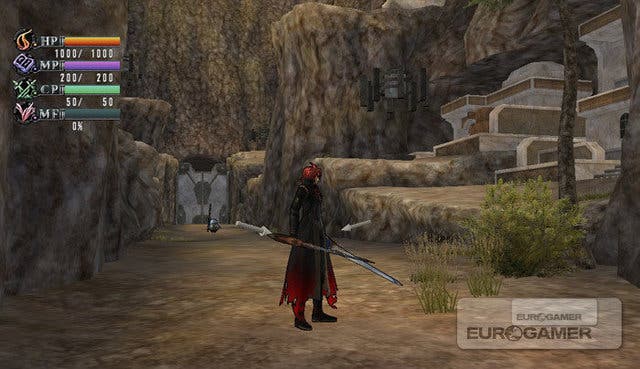Last Rebellion
First against the wall.
When it comes to RPGs, I always endeavour to leave myself enough time to finish the game and write the review well before my deadline, and normally this involves around four days of upgrading to increasingly shiny swords and killing different types of cockatrice and chimera.
So when Last Rebellion showed up in the post with its NIS America endorsement badge gleaming on the front of the box, I quickly had visions of the original Disgaea and booked the whole weekend off. But come Sunday morning, I was already finished after little over 12 hours.
In my excitement I'd failed to notice that Last Rebellion had only been published by Nippon Ichi, and was in fact developed by Hit Maker. With a modest title like that you'd expect a company with a solid track record, but the only games to its name are the mediocre Blade Dancer and Dragoneer's Aria on the PSP, as well as A Witch's Tale on the DS. So Last Rebellion is Hit Maker's first attempt at making a console RPG.
The setting is effective yet unremarkable, as players are plunged into a world governed by two opposing deities - Formival, the god of creation, and Meiktilia, the goddess of destruction. You'd guess that Meiktilia is the villain of the piece, but in this case the opposite is true, as Formival has been causing havoc by resurrecting all the dead into monsters and demons, with humanity turning to Meiktilia for assistance.

Thanks to Meiktilia two factions are set up - the Blades, who deal with the destruction of the body, and the Sealers, who can lock away a soul to stop it coming back to life. The game then introduces us to Nine and Aisha - the best Blade and Sealer, respectively, in the land - who quickly get caught up in a dastardly plot hatched by Nine's younger brother Alfred. After Nine is killed in the opening sequence, Aisha saves him by combining their souls.
What then follows is your typical quest for revenge as the duo set off in search of answers, battling and sealing all kinds of demons along the way. The plot is voiced in English through static cut-scenes, and although most of the characters are fairly uninspired with wooden delivery - the belligerent Nine in particular - they nonetheless keep the narrative chugging along. But it's the lack of characters that's particularly noticeable, as from start to finish I counted less than 10 who qualified for even a basic supporting role, and that includes both the two leads.
This archaic reduction also spreads to the locations. There are just 10 main areas in the whole game, all of which can be accessed from a central hub of 12 portals. Most of these can be explored to exhaustion within 30 minutes, and one entire area towards the end is little more than a linear spiral staircase, requiring you to reach the top and then come straight down again.

But for a full-price PS3 game, what's more shocking is the last-gen visuals. To say this looks good by PS2 standards would be slapping God of War II and Shadow of the Colossus in the face, because visually Last Rebellion looks painfully substandard. There's so little going on. The incredibly linear design and low texture quality gives the impression that this was once in development on PSP, and going by Hit Maker's record this wouldn't be surprising.
The combat also only does a half-decent job of seeing you through a single day's completion. Rather than random battles, Last Rebellion shows each enemy shuffling around in real-time, and although you can sneak past with the help of invisibility and run spells, the order of the day is to grind for a few levels before moving onto the next section.
The enemies themselves are fairly bland, with examples including Killer Trolls and Chaos Slimes. When you consider the bestiary has only 76 entries - with liberal recycling of the same character models resulting in the Hobbit, Hobbit Baron, Hobbit Marquis, Hobbit Duke and Hobbit Lord - the encounter variety is mind-numbingly miniscule. Even carving up a Cannibal Broom isn't as fun as it might sound, as once you enter a battle by touching an enemy it's very much the turn-based norm.








